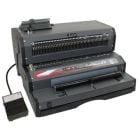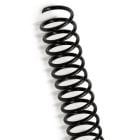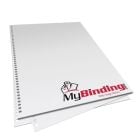Creating a Work Portfolio
Putting together a great work portfolio is crucial to getting work in many fields. Here are some basic tips for creating a portfolio that represents you and your work.
What to Include:
Your resume should always be included in your portfolio, and it should be as current and up to date as possible. There are probably thousands of tutorials online that cover how to create a great resume, so if you are feeling a little lost in this stage, go out there and get some help. Some of the most basic rules concerning resumes, however, are to make sure that only the most important information be included, and that it should never exceed two pages in length.
The next thing you want to include in your portfolio, naturally, is examples of your work. Depending on what stage your career is in, you may either have precious little or quite a lot of work to choose from. If you are just starting out, you can include work you completed for school projects, or you and some other folks who are just getting started in the professional world can get together and create some mockups that can be included in the portfolios of all who participate.
When you are gathering you samples, the key is to show both your strengths and your diversity. You can rearrange the clips to place, say, your work on commercial brochures at the forefront if that is the job you are trying for. Keep your portfolio fairly fluid and flexible and don’t be shy about tooting your own horn if a particular item or campaign was especially successful.
Make sure that you have several color copies of all the items in your portfolio, so that you can send them quickly via snail mail, if the situation calls for it.
Putting it Together
You can have a wide variety of materials in your portfolio, and not every item has to be included for every interview. If you do both graphics and photography, and you are interviewing for a job in the former category, then go heavy on the graphics work you have done. It is great, as previously mentioned, to demonstrate your diverse skills, but you will always want to lean heavily on the skill you possess that pertain to the job for which you are interviewing.
Regardless of the amount of work you have done, you should probably only include about 15 examples of your work at most. If you find that restrictive, you can have a tabbed section after your “fabulous fifteen” that delves a little deeper into your work, or simply be prepared to discuss the depth of your experience while you are being interviewed.
Binding and Presenting It:
Since you want your portfolio to be flexible and changeable, you will want to put it together in a way that allows for this. There are portfolio kits out there, or you can simply opt for a high-quality 3 ring binder. Some 3 ring systems allow you to slip different pages in the cover so you can keep it updated as necessary.









